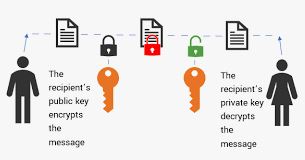Encryption key is a cryptographic term. This is secret information (a set of numbers and letters) that is used by a special algorithm for encrypting / decrypting messages, setting / verifying digital signatures, etc. The amount of information in the key is measured in bits: the more bits in the key, the more securely the information is encrypted.
Encryption keys are:
symmetric – for encryption and decryption, as a rule, one key is used (or the second is easily calculated from the first),
asymmetric – two keys are used: one for encryption (it is transmitted over an open channel), the other for decryption (the so-called private key):
the public key (public key);
private key (private key).
Asymmetric cryptography is more reliable from the point of view that attackers who intercept part of the traffic will not be able to get all the information, since they need the second part of the key to decrypt, and it is stored directly by the user.
Your site data is protected
Install an SSL certificate and your site will run over a secure HTTPS connection
Public and private key of the certificate
One of the areas of use of the asymmetric encryption system is SSL certificates. You can read more about it in the article What is an SSL certificate for . The length of the SSL cipher (in other words, the degree of its reliability) is the sum of the length of the public and private parts of the key:
public key – 4096 bits ,
private key – 128-256 bits .
The size of the SSL key guarantees the security of encrypted information and the safety of data transmission. The data is encrypted when the browser accesses the server using the public public key. The private encryption key is generated when the SSL certificate is issued and is only shared with the domain administrator. This encryption is used at the stage of decrypting information coming from the browser.
Let us explain the process of exchanging information between a browser and a server over a secure connection using an illustrative example used in cryptography .
We have two characters: Bob (server) and Alice (user’s browser). Bob hands the padlock to Alice . Only Bob can open this lock, since only he has the key.
Lock = public (public) key.
Lock key = private (private) key.
Having received the lock, Alice puts it on the box, which contains some secret information, and sends it back to Bob. Likewise, the browser encrypts the message with the public key and sends it to the server.
The box with the lock will get to Bob, he will open the lock with his key and find out the secret information. For example, the server decrypts the message with a private key that only it has.









